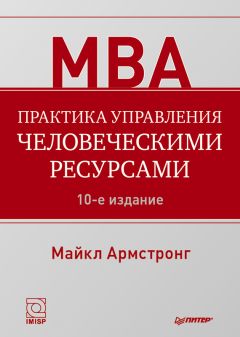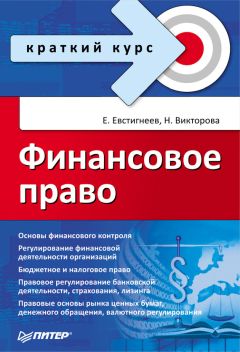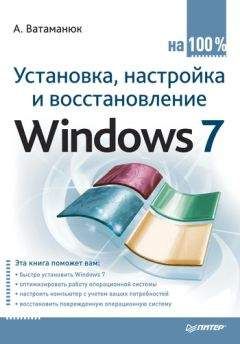Майкл Армстронг - Практика управления человеческими ресурсами
513. McLean A. Organization Development: A case of the Emperor’s new clothes? Personnel Review, 4(1), pp. 38–46., 1981.
514. Macneil R. Relational contract: what we do and do not know, Wisconsin Eaw Review, pp. 483–525, 1985.
515. Makin P., Cooper С ., Сох С. Organizations and the Psychological Contract, BPS Books, Leicester, 1996.
516. Mangham L. L. The Politics of Organizational Change, Associated Business Press, London, 1979.
517. Mansfield В. What is «competence» all about? Competency, 6(3), pp. 24– 28, 1999.
518. Mansfield В., Mitchell L. Towards a Competent Workforce, Gower,Aldershot, 1986.
519. Mant A. The Experienced Manager, British Institute of Management, London, 1970.
520. Mant A. The psychological contract, Presentation at IPD National Conference, October, 1996.
521. Manus T. M., Graham M. D. Creating a Total Rewards Strategy, American Management Association, New York, 2003.
522. Marchington M. Joint Consultation Revisited, Glasgow University, Glasgow, 1985.
523. Marchington M. Fairy tales and magic wands: new employment practices in perspective, Employee Relations, Spring, pp. 51–66, 1995a.
524. Marchington M. Employee relations, in Strategic Prospects for HRM, ed S. Tyson, Institute of Personnel and Development, London, 1995b.
525. Marchingon M., Goodman J. New Developments in Employee Involvement, Employment Department, Sheffield, 1992.
526. Marchington M., Wilkinson A. Core Personnel and Development, Institute of Personnel and Development, London, 1996.
527. Marchington M., Wilkinson A., Ackers P., Dundon A. Management Choice and Employee Voice, CIPD, London, 2001.
528. Margerison С. A constructive approach to appraisal, Personnel Management, July, pp. 30–33, 1976.
529. Margerison С., McCann R. The Margerison/McCann team management resource: theory and application, International Journal of Manpower, 7(2), pp. 1–32, 1986.
530. Marginson P., Armstrong P., Edwards P., Purcell J. The control of industrial relations in large companies: an initial analysis of the Second Company Level Industrial Relations Survey, Warwick Papers in Industrial Relations No. 45, University of Warwick, Coventry, 1993.
531. Marginson P., Sisson К. Single table talk, Personnel Management, May, pp. 46–49, 1990.
532. Markham С. Practical Consulting, Institute of Chartered Accountants, London, 1987.
533. Marsden D., French S. What a Performance: Performance-related pay in the public services, Centre for Economic Performance, London, 1998.
534. Marsden D., Richardson R. Performing for pay?, British Journal of Industrial Relations, 32(2), pp. 243–61, 1994.
535. Marsh A. Employee Relations Policy and Decision Making, Gower, Aldershot, 1981.
536. Marsick V. J. Trends in managerial invention: creating a learning map, Management Learning, 21(1) pp. 11–33., 1994
537. Martin А. О. Welfare at Work, Batsford, London, 1967.
538. Marx К. Capital, Penguin, Harmondsworth, (translated in 1976).
539. Maslow A. Motivation and Personality, Harper & Row, New York, 1954.
540. Mayo A. A framework for career management, Personnel Management, February, pp. 36–39, 1992.
541. Mayo A. Making human capital meaningful, Knowledge Management Review, January/February, pp. 26–29, 1999.
542. Mayo A. The Human Value of the Enterprise: Valuing people as assets, Nicholas Brealey, London, 2001.
543. Mayo A., Lank E. The Power of Learning: A guide to gaining competitive advantage, Institute of Personnel and Development, London, 1994.
544. Mayo E. Human Problems of an Industrial Civilisation, Macmillan, London, 1933.
545. Mecklenberg S., Deering A., Sharp D. Knowledge management: a secret engine of corporate growth, Executive Agenda, 2, pp. 5–15, 1999.
546. Meyerson D., Martin J. Cultural studies and integration of three different views, Journal of Management Studies, 24(6), pp. 623–47, 1987.
547. Mezirow J. A. A critical theory of self-directed learning, in Self-directed Learning: From theory to practice, ed S Brookfield, Jossey-Bass, San Fransisco, CA, 1985.
548. Miles R. E., Snow С. С. Organizational Strategy, Structure and Process, McGraw-Hill, New York, 1978.
549. Milkovitch M., Wigdor. Pay for Performance: Evaluating performance appraisal and merit pay, National Academy Press, Washington, DC, 1991.
550. Miller E., Rice A. Systems of Organization, Tavistock, London, 1967
551. Miller L., Rankin N., Neathey F. Competency Frameworks in UK Organizations, CIPD, London, 2001.
552. Miller P. Strategic industrial relations and human resource management: distinction, definition and recognition, Journal of Management Studies, 24, pp. 101–109, 1987.
553. Miller P. Strategic human resource management: what it is and what it is’nt, Personnel Management, February, pp. 46–51, 1989.
554. Miller P. Strategic human resource management: an assessment of progress, Human Resource Management Journal, 1(4), pp. 23–39, 1991.
555. Miller R., Stewart J. Opened university, People Management, 5(12), pp. 42–16, 1999.
556. Millward N. The New Industrial Relations? Policy Studies Institute, Poole, 1994.
557. Millward N., Bryn A., Forth J. All Change At Work? Routledge, London, 2000.
558. Millward N., Stevens M., Smart D., Hawes W. R. Workplace Industrial Relations in Transition, Dartmouth Publishing, Hampshire, 1992.
559. Mintzberg H. The Nature of Managerial Work, Harper & Row, New York, 1973.
560. Mintzberg H. Patterns in strategy formation, Management Science, May, pp. 934–948, 1978.
561. Mintzberg H. Organization design: fashion or fit, Harvard Business Review, January/February, pp. 103–116, 1981.
562. Mintzberg H. Power in and Around Organizations, Prentice-Hall, Englewood Cliffs, NJ, 1983a.
563. Mintzberg H. Structure in Fives, Prentice-Hall, Englewood Cliffs, NJ, 1983b.
564. Mintzberg, H (1987) Crafting strategy, Harvard Business Review, July/ August, pp. 66–74.
565. Mintzberg H., Quinn J. В., James R. M. The Strategy Process: Concepts, contexts and cases, Prentice-Hall, Englewood Cliffs, NJ, 1988.
566. Mirabile R. J. Leadership competency development, competitive advantage for the future, Management Development Forum, 1(2), pp. 1–15, 1998.
567. Mirvis P., Hall D. Psychological success and the boundary-less career, Journal of Organisational Behaviour, 15, pp. 361–80, 1994.
568. Mischel W. Personality and Assessment, Wiley, New York, 1968.
569. Mischel W. Introduction to Personality, Holt, Rinehart and Winston, New York, 1981.
570. Mohrman S. A., Lawler E. E. The new human resources management: creating the strategic business partnership, in Tomorrow’s Organization: Crafting winning capabilities in a dynamic world, S. A. Mohrman, J. R. Galbraith and E. E. Lawler, Jossey-Bass, San Francisco, CA, 1998.
571. Monks К. Models of personnel management: a means of understanding the diversity of personnel practices, Human Resource Management Journal, 3(2), pp. 29–41, 1992.
572. Mueller F. Human resources as strategic assets: an evolutionary resourcebased theory, Journal of Management Studies, 33(6), pp. 757–85, 1996.
573. Mullen В., Cooper С. The relation between group Cohesiveness and performance: an integration, Psychological Bulletin, 115, pp. 210–27, 1994.
574. Mumford A. How managers can become developers, Personnel Management, June, pp. 42–45, 1993.
575. Mumford A., Gold J. Management Development: Strategies for action, CIPD, 2004.
576. Munro Fraser J. A Handbook of Employment Interviewing, Macdonald and Evans, London, 1954.
577. Murlis H., Fitt D. Job evaluation in a changing world, Personnel Management, May, pp. 39–43, 1991.
578. Nadler D. A., Tushman M. L. A congruence model for diagnosing organizational behaviour, Resource Book in Macro-Organizational Behaviour, R. H. Miles (ed), Goodyear Publishing, Santa Monica, CA, 1980.
579. Nahpiet J., Ghoshal S. Social capital, intellectual capital and the organizational advantage, Academy of Management Review, 23(2), pp. 24– 266, 1998.
580. Nalbantian R., Guzzo R. A., Kieffer D., Doherty J. Play to your Strengths, McGraw-Hill, New York, 2004.
581. The National Online Recruitment Survey . Enhance Media, Winter, London, 2003.
582. New Learning for New Work Consortium. Managing Learning for Added Value, Institute of Personnel and Development, London, 1999.
583. Newcomb T. M. On the definition of attitudes, in M Jahoda and N Warren (eds), Attitudes, Penguin, Harmondsworth, 1966.
584. Newton T., Findlay P. Playing god?: the performance of appraisal, Human Resource Management Journal, 6(3), pp. 42–56, 1996.
585. Nielsen N. H. Job content evaluation techniques based on Marxian economics, WorldatWork Journal, 11(2), pp. 52–62, 2002.
586. Nonaka I (1991) The knowledge creating company, Harvard Business Review, November – December, pp. 96–104.
587. Nonaka I. A dynamic theory of organisational knowledge creation, Organisation Science, 5, pp. 14–37, 1994.
588. Nonaka I., Takeuchi H. The Knowledge Creating Company, Oxford University Press, New York, 1995.
589. Noon M. HRM: a map, model or theory? in P. Blyton and P. Turnbull (eds) Reassessing Human Resource Management, Sage Publications, London, 1992.
590. OECD. Human Capital Investment: An international comparison, Organization for Economic Cooperation and Development, Paris, 1998.
591. Oliver J. Cash on delivery, Management Today, August, pp. 6–9, 1996.
592. O’Neal S. The phenomenon of total rewards, АСА Journal, 7(3), pp. 8–12, 1998.
593. Opsahl R., Dunnette M. The role of financial compensation in industrial motivation, Psychological Bulletin, 66, pp. 94–118, 1966.
594. Oracle . Human Capital Management, People Management, London, 2005.
595. O’Reilly С. A., Pfeffer J. Hidden Value: How great companies achieve extraordinary results, Harvard Business School press, Boston, MA, 2000.
596. Ouchi W. G. Theory Z, Addison-Wesley, Reading, MA, 1981.
597. Pascale R. Managing on the Edge, Viking, London, 1990.
598. Pascale R., Athos A. The Art of Japanese Management, Simon & Schuster, New York, 1981.
599. Patterson M. G., West M. A., Lawthom R., Nickell S. Impact of People Management Practices on Performance, Institute of Personnel and Development, London, 1997.
600. Pearce J. A., Robinson R. В. Strategic Management: Strategy formulation and implementation, Irwin, Georgetown, Ontario, 1988.
601. Pearn К., Kandola R. Job Analysis, Institute of Personnel Management, London, 1993.
602. Pedler M., Burgoyne J. A Manager’s Guide to Self Development, McGraw Hill, Maidenhead, 1994.
603. Pedler M., Boy dell T., Burgoyne J. Towards the learning company, Management Education and Development, 20(1), pp. 1–8, 1989.
604. Pedler M., Burgoyne J., Boydell T. The Learning Company: A strategy for sustainable development, McGraw-Hill, London, 1991.
605. Penrose E. The Theory of the Growth of the Firm, Blackwell, Oxford, 1959.
606. Perkins S. J. Internationalization: The people dimension, Kogan Page, London, 1997.
607. Perkins S., Hendry С. The IPD Guide on International Reward and Recognition, Institute of Personnel and Development, London, 1999.
608. Perrow С. The Short and Glorious History of Organizational Theory, in R. H. Miles (ed) Resource Book in Macro-Organizational Behaviour, Goodyear Publishing, Santa Monica, CA, 1980.
609. Peters J. Strategies and Tactics in Labour Negotiations, McGraw-Hill, New York, 1968.




